
5 Selected Items
Select an item by clicking its checkbox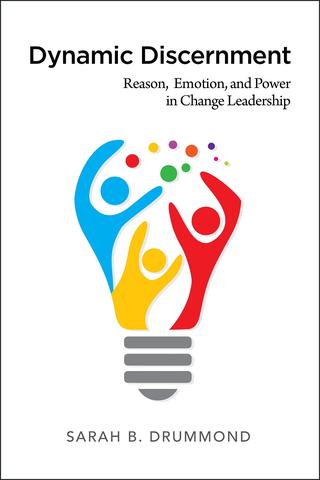
Dynamic Discernment: Reason, Emotion, and Power in Change Leadership
Additional Info:
In order to fulfill their missions, institutions sometimes have to change. Leaders guiding communities through such moments or eras need instructional resources, and we do them a disservice when we oversimplify the work of change leadership. “Ten Easy Solutions” do not exist, and suggesting they do causes leaders to feel discouraged, like there must be something wrong with them when they fear, falter, or fail. Change leadership is hard, sometimes ...
In order to fulfill their missions, institutions sometimes have to change. Leaders guiding communities through such moments or eras need instructional resources, and we do them a disservice when we oversimplify the work of change leadership. “Ten Easy Solutions” do not exist, and suggesting they do causes leaders to feel discouraged, like there must be something wrong with them when they fear, falter, or fail. Change leadership is hard, sometimes ...
Additional Info:
In order to fulfill their missions, institutions sometimes have to change. Leaders guiding communities through such moments or eras need instructional resources, and we do them a disservice when we oversimplify the work of change leadership. “Ten Easy Solutions” do not exist, and suggesting they do causes leaders to feel discouraged, like there must be something wrong with them when they fear, falter, or fail. Change leadership is hard, sometimes even painful, but it is not impossible when approached with appreciation for complexity and a broad repertoire. Dynamic Discernment: Reason, Emotion, and Power in Change Leadership chops through the thicket of change dynamics, opening up three different pathways:
• Reason, where change leaders educate their communities and plot out concrete actions;
• Emotion, where leaders manage the reactivity that change can incite in a separate-yet-connected style of engagement; and
• Power, where leaders take seriously the ways in which grass-roots and top-down forms of authority can find common ground. Sarah Drummond has experienced change leadership firsthand in numerous contexts, and this book uses abundant illustrations and examples, but Dynamic Discernment is best understood as a new and multidisciplinary theory of change. Although aimed at religious leaders, any who serve a mission-driven institution will find resonance. The book provides guidance for (1) recognizing the dominant dynamic at work in a community experiencing change and (2) choosing leadership practices accordingly. (From the Publisher)
Table Of Content:
Introduction
Ch 1. How We Think about Change
Ch 2. Reason
Ch 3. Emotion
Ch 4. Power
Ch 5. Discernment on the Leadership Terrain
Acknowledgements
Bibliography
In order to fulfill their missions, institutions sometimes have to change. Leaders guiding communities through such moments or eras need instructional resources, and we do them a disservice when we oversimplify the work of change leadership. “Ten Easy Solutions” do not exist, and suggesting they do causes leaders to feel discouraged, like there must be something wrong with them when they fear, falter, or fail. Change leadership is hard, sometimes even painful, but it is not impossible when approached with appreciation for complexity and a broad repertoire. Dynamic Discernment: Reason, Emotion, and Power in Change Leadership chops through the thicket of change dynamics, opening up three different pathways:
• Reason, where change leaders educate their communities and plot out concrete actions;
• Emotion, where leaders manage the reactivity that change can incite in a separate-yet-connected style of engagement; and
• Power, where leaders take seriously the ways in which grass-roots and top-down forms of authority can find common ground. Sarah Drummond has experienced change leadership firsthand in numerous contexts, and this book uses abundant illustrations and examples, but Dynamic Discernment is best understood as a new and multidisciplinary theory of change. Although aimed at religious leaders, any who serve a mission-driven institution will find resonance. The book provides guidance for (1) recognizing the dominant dynamic at work in a community experiencing change and (2) choosing leadership practices accordingly. (From the Publisher)
Table Of Content:
Introduction
Ch 1. How We Think about Change
Ch 2. Reason
Ch 3. Emotion
Ch 4. Power
Ch 5. Discernment on the Leadership Terrain
Acknowledgements
Bibliography
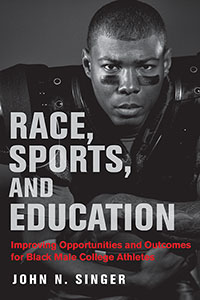
Race, Sports, and Education: Improving Opportunities and Outcomes for Black Male College Athletes
Additional Info:
Race, Sports, and Education highlights the myriad ways in which organized collegiate sport has both positively contributed to and negatively detracted from the educational experiences of Black male college athletes. Specifically, John N. Singer examines the educational experiences, opportunities, and outcomes of Black males who have played NCAA Division I football and/or basketball at historically White colleges and universities.
Singer is intensely aware of the ways in ...
Race, Sports, and Education highlights the myriad ways in which organized collegiate sport has both positively contributed to and negatively detracted from the educational experiences of Black male college athletes. Specifically, John N. Singer examines the educational experiences, opportunities, and outcomes of Black males who have played NCAA Division I football and/or basketball at historically White colleges and universities.
Singer is intensely aware of the ways in ...
Additional Info:
Race, Sports, and Education highlights the myriad ways in which organized collegiate sport has both positively contributed to and negatively detracted from the educational experiences of Black male college athletes. Specifically, John N. Singer examines the educational experiences, opportunities, and outcomes of Black males who have played NCAA Division I football and/or basketball at historically White colleges and universities.
Singer is intensely aware of the ways in which many Black athletes have been shortchanged by the collegiate sport system. He describes how the colleges and universities have exploited athletes for the institutions’ financial gain and deprived them of basic educational opportunities that ought to be enjoyed by all students. At the same time, Singer argues that sports do in fact offer genuine educational opportunities and benefits for many of these athletes. He is acutely attuned to the fact that these athletes love their sports, and that their participation in these sports makes unique educational experiences available to them. As Singer shows, to understand the situation and to chart realistic, fruitful reform measures requires a full appreciation of the complexity—indeed, of the many competing and contradictory elements—that characterizes intercollegiate sport and the experiences of Black athletes at the present time.
The book brings to the fore the voices, stories, and perspectives of twelve Black male college athletes via a case study of teammates from a big-time college football program and individual reflective vignettes of athletes across several different college programs. Through his analysis of the system and his attention to student views and experiences, Singer crafts a valuable, nuanced account and points in the direction of reforms that would significantly improve the educational opportunities and experiences of these athletes. At a time when collegiate sports have attained unmistakable institutional value and generated unprecedented financial returns—all while largely failing the educational needs of its athletes—this book offers a clear, detailed vision of the current situation and suggestions for a more equitable way forward. (From the Publisher)
Table Of Content:
Introduction
Ch. 1. Contextualizing the Significance of Studying Black Male College Athletes
Ch 2. Education Matters Then and Now: A Case Study of Teammates in a Big-Time College Football Program
Ch 3. Individual Narratives on Black Male Athlete Excellence and Resilience
Ch 4. Conclusion
Notes
Acknowledgments
About the Author
Index
Race, Sports, and Education highlights the myriad ways in which organized collegiate sport has both positively contributed to and negatively detracted from the educational experiences of Black male college athletes. Specifically, John N. Singer examines the educational experiences, opportunities, and outcomes of Black males who have played NCAA Division I football and/or basketball at historically White colleges and universities.
Singer is intensely aware of the ways in which many Black athletes have been shortchanged by the collegiate sport system. He describes how the colleges and universities have exploited athletes for the institutions’ financial gain and deprived them of basic educational opportunities that ought to be enjoyed by all students. At the same time, Singer argues that sports do in fact offer genuine educational opportunities and benefits for many of these athletes. He is acutely attuned to the fact that these athletes love their sports, and that their participation in these sports makes unique educational experiences available to them. As Singer shows, to understand the situation and to chart realistic, fruitful reform measures requires a full appreciation of the complexity—indeed, of the many competing and contradictory elements—that characterizes intercollegiate sport and the experiences of Black athletes at the present time.
The book brings to the fore the voices, stories, and perspectives of twelve Black male college athletes via a case study of teammates from a big-time college football program and individual reflective vignettes of athletes across several different college programs. Through his analysis of the system and his attention to student views and experiences, Singer crafts a valuable, nuanced account and points in the direction of reforms that would significantly improve the educational opportunities and experiences of these athletes. At a time when collegiate sports have attained unmistakable institutional value and generated unprecedented financial returns—all while largely failing the educational needs of its athletes—this book offers a clear, detailed vision of the current situation and suggestions for a more equitable way forward. (From the Publisher)
Table Of Content:
Introduction
Ch. 1. Contextualizing the Significance of Studying Black Male College Athletes
Ch 2. Education Matters Then and Now: A Case Study of Teammates in a Big-Time College Football Program
Ch 3. Individual Narratives on Black Male Athlete Excellence and Resilience
Ch 4. Conclusion
Notes
Acknowledgments
About the Author
Index
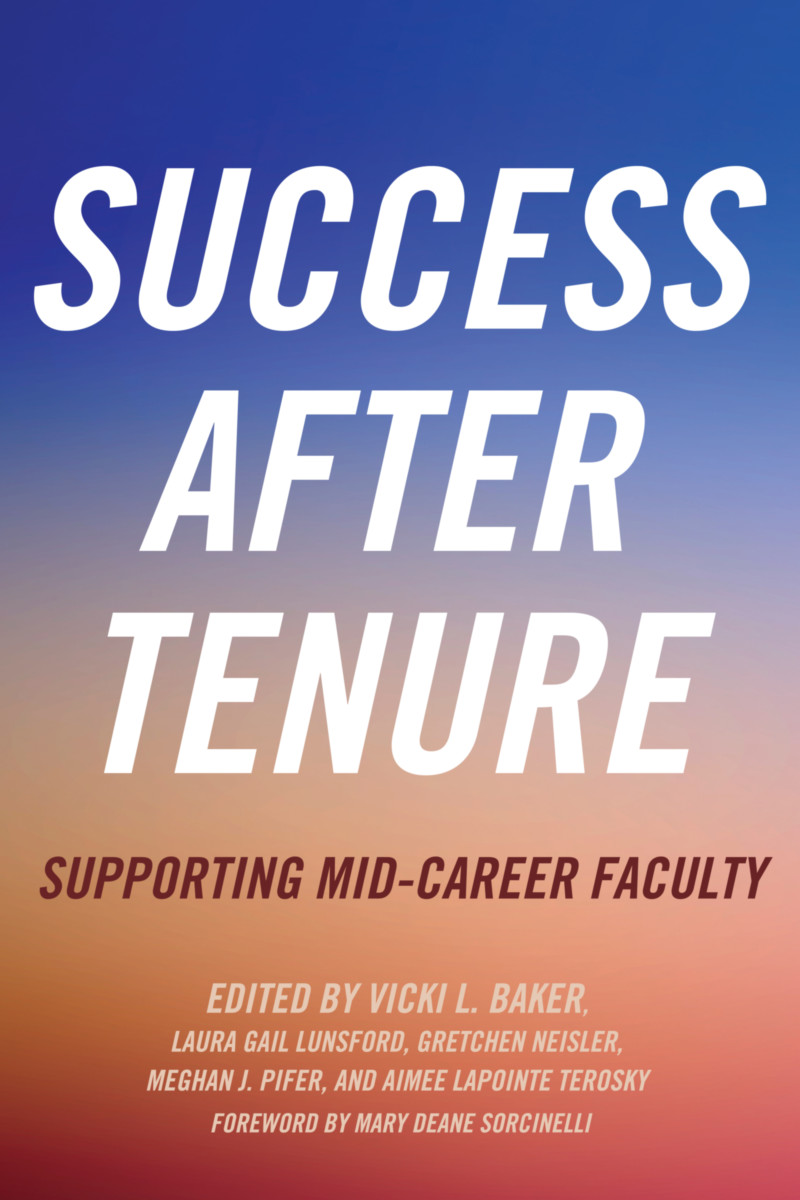
Success After Tenure: Supporting Mid-Career Faculty
Additional Info:
This book brings together leading practitioners and scholars engaged in professional development programming for and research on mid-career faculty members. The chapters focus on key areas of career development and advancement that can enhance both individual growth and institutional change to better support mid-career faculties.
The mid-career stage is the longest segment of the faculty career and it contains the largest cohort of faculty. Also, mid-career faculty are ...
This book brings together leading practitioners and scholars engaged in professional development programming for and research on mid-career faculty members. The chapters focus on key areas of career development and advancement that can enhance both individual growth and institutional change to better support mid-career faculties.
The mid-career stage is the longest segment of the faculty career and it contains the largest cohort of faculty. Also, mid-career faculty are ...
Additional Info:
This book brings together leading practitioners and scholars engaged in professional development programming for and research on mid-career faculty members. The chapters focus on key areas of career development and advancement that can enhance both individual growth and institutional change to better support mid-career faculties.
The mid-career stage is the longest segment of the faculty career and it contains the largest cohort of faculty. Also, mid-career faculty are tasked with being the next generation of faculty leaders and mentors on their respective campuses, with little to no supports to do so effectively, at a time when higher education continues to face unprecedented challenges while managing continued goal of diversifying both the student and faculty bodies.
The stories, examples, data, and resources shared in this book will provide inspiration--and reality checks--to the administrators, faculty developers, and department chairs charged with better supporting their faculties as they engage in academic work. Current and prospective faculty members will learn about trends in mid-career faculty development resources, see examples of how to create such supports when they are lacking on their campuses, and gain insights on how to strategically advance their own careers based on the realities of the professoriate.
The book features a variety of institution types: community colleges, regional/comprehensive institutions, liberal arts colleges, public research universities, ivy league institutions, international institutions, and those with targeted missions such as HSI/MSI and Jesuit.
Topics include faculty development for formal and informal leadership roles; strategies to support professional growth, renewal, time and people management; teaching and learning as a form of scholarship; the role of learning communities and networks as a source of support and professional revitalization; global engagement to support scholarship and teaching; strategies to recruit, retain, and promote underrepresented faculty populations; the policy-practice connection; and gender differences related to key mid-career outcomes.
While the authors acknowledge that the challenges facing the mid-career stage are numerous and varying, they offer a counter narrative by looking at ways that faculty and/or institutions can assert themselves to find opportunities within challenging contexts. They suggest that these challenges highlight priority mentoring areas, and support the creation of new and innovative faculty development supports at institutional, departmental, and individual levels. (From the Publisher)
Table Of Content:
Foreword (Mary Deane Sorcinelli)
Acknowledgments
Introduction (Vicki L. Baker, Aimee LaPointe Terosky, Laura Gail Lunsford, Gretchen Neisler, Meghan J. Pifer)
Ch 1. Faculty Development in the United States: Past and Present (Vicki L. Baker, Christina M. Vo Phan)
Part One: Leadership Development (Laura Gail Lunsford)
Ch 2. The Academic Leadership Institute for Mid-Career Faculty (Vicki L. Baker, Laura Gail Lunsford, Meghan J. Pifer
Ch 3. Developing Leaders for the Next Phase of Jesuit Higher Education: Ignatian Leadership Program for Faculty (Karin Botto, Carolyn Berenato)
Ch 4. “Stayin’ Alive” and Thriving at Mid-Career (Amy Strage)
Part Two: Teaching and Learning (Aimee LaPointe Terosky)
Ch 5. Examining Mid-Career Faculty Development Through a Sociocultural, Professional Learning Lens (Annique Boelryk,Cheryl Amundsen)
Ch 6. Scholarship of Teaching and Learning as a Vehicle for Thriving in Mid-Career (Mike Pinter)
Ch 7. Attracting Mid-Career Faculty to Teach in First-Year Student Learning Communities (Hillary H. Steiner)
Part Three: Scholarly Development (Gretchen Neisler)
Ch 8. Global Research Innovation: A Case of Evolving the Mid-Career Faculty Research Portfolio (Gretchen Neisler)
Ch 9. Under Pressure: The Challenge for Mid-Career Researchers in the Innovation Age (George Carayannopoulos, Ruth Graham)
Ch 10. Getting Over the Hump: Continued Professional Development for Mid-Career Faculty (LeRhonda Manigault-Bryant, Denise Kimber Buell, Lee Y. Park, John P. Gerry)
Ch 11. Faculty Development for Mid-Career Women in STEM: Cementing Career Success, Building Future Leaders (Sandra L. Laursen, Ann E. Austin)
Part Four: Special Topics (Meghan J. Pifer)
Ch 12. “Where did all the Mentoring Go?” Exploring Undefined Mid-Career Paths Through Informal Peer-Mentoring Networks (Jeannetta G. Williams, Kim Case)
Ch 13. Evidence-Based Faculty Development: The COACHE Research-Practice Partnership (Kiernan Mathews, R. Todd Benson)
Ch 14. Navigating a Foggy Climate: Women Associate Professors' Sense of Agency and Work Environment Experiences (Courtney Lennartz, KerryAnn O’Meara)
Ch 15. Supporting Mid-Career Faculty Members: A Research and Practice Agenda (Jaime Lester, Jennifer Lebrón, Carrie Klein)
Editors and Contributors
Index
This book brings together leading practitioners and scholars engaged in professional development programming for and research on mid-career faculty members. The chapters focus on key areas of career development and advancement that can enhance both individual growth and institutional change to better support mid-career faculties.
The mid-career stage is the longest segment of the faculty career and it contains the largest cohort of faculty. Also, mid-career faculty are tasked with being the next generation of faculty leaders and mentors on their respective campuses, with little to no supports to do so effectively, at a time when higher education continues to face unprecedented challenges while managing continued goal of diversifying both the student and faculty bodies.
The stories, examples, data, and resources shared in this book will provide inspiration--and reality checks--to the administrators, faculty developers, and department chairs charged with better supporting their faculties as they engage in academic work. Current and prospective faculty members will learn about trends in mid-career faculty development resources, see examples of how to create such supports when they are lacking on their campuses, and gain insights on how to strategically advance their own careers based on the realities of the professoriate.
The book features a variety of institution types: community colleges, regional/comprehensive institutions, liberal arts colleges, public research universities, ivy league institutions, international institutions, and those with targeted missions such as HSI/MSI and Jesuit.
Topics include faculty development for formal and informal leadership roles; strategies to support professional growth, renewal, time and people management; teaching and learning as a form of scholarship; the role of learning communities and networks as a source of support and professional revitalization; global engagement to support scholarship and teaching; strategies to recruit, retain, and promote underrepresented faculty populations; the policy-practice connection; and gender differences related to key mid-career outcomes.
While the authors acknowledge that the challenges facing the mid-career stage are numerous and varying, they offer a counter narrative by looking at ways that faculty and/or institutions can assert themselves to find opportunities within challenging contexts. They suggest that these challenges highlight priority mentoring areas, and support the creation of new and innovative faculty development supports at institutional, departmental, and individual levels. (From the Publisher)
Table Of Content:
Foreword (Mary Deane Sorcinelli)
Acknowledgments
Introduction (Vicki L. Baker, Aimee LaPointe Terosky, Laura Gail Lunsford, Gretchen Neisler, Meghan J. Pifer)
Ch 1. Faculty Development in the United States: Past and Present (Vicki L. Baker, Christina M. Vo Phan)
Part One: Leadership Development (Laura Gail Lunsford)
Ch 2. The Academic Leadership Institute for Mid-Career Faculty (Vicki L. Baker, Laura Gail Lunsford, Meghan J. Pifer
Ch 3. Developing Leaders for the Next Phase of Jesuit Higher Education: Ignatian Leadership Program for Faculty (Karin Botto, Carolyn Berenato)
Ch 4. “Stayin’ Alive” and Thriving at Mid-Career (Amy Strage)
Part Two: Teaching and Learning (Aimee LaPointe Terosky)
Ch 5. Examining Mid-Career Faculty Development Through a Sociocultural, Professional Learning Lens (Annique Boelryk,Cheryl Amundsen)
Ch 6. Scholarship of Teaching and Learning as a Vehicle for Thriving in Mid-Career (Mike Pinter)
Ch 7. Attracting Mid-Career Faculty to Teach in First-Year Student Learning Communities (Hillary H. Steiner)
Part Three: Scholarly Development (Gretchen Neisler)
Ch 8. Global Research Innovation: A Case of Evolving the Mid-Career Faculty Research Portfolio (Gretchen Neisler)
Ch 9. Under Pressure: The Challenge for Mid-Career Researchers in the Innovation Age (George Carayannopoulos, Ruth Graham)
Ch 10. Getting Over the Hump: Continued Professional Development for Mid-Career Faculty (LeRhonda Manigault-Bryant, Denise Kimber Buell, Lee Y. Park, John P. Gerry)
Ch 11. Faculty Development for Mid-Career Women in STEM: Cementing Career Success, Building Future Leaders (Sandra L. Laursen, Ann E. Austin)
Part Four: Special Topics (Meghan J. Pifer)
Ch 12. “Where did all the Mentoring Go?” Exploring Undefined Mid-Career Paths Through Informal Peer-Mentoring Networks (Jeannetta G. Williams, Kim Case)
Ch 13. Evidence-Based Faculty Development: The COACHE Research-Practice Partnership (Kiernan Mathews, R. Todd Benson)
Ch 14. Navigating a Foggy Climate: Women Associate Professors' Sense of Agency and Work Environment Experiences (Courtney Lennartz, KerryAnn O’Meara)
Ch 15. Supporting Mid-Career Faculty Members: A Research and Practice Agenda (Jaime Lester, Jennifer Lebrón, Carrie Klein)
Editors and Contributors
Index
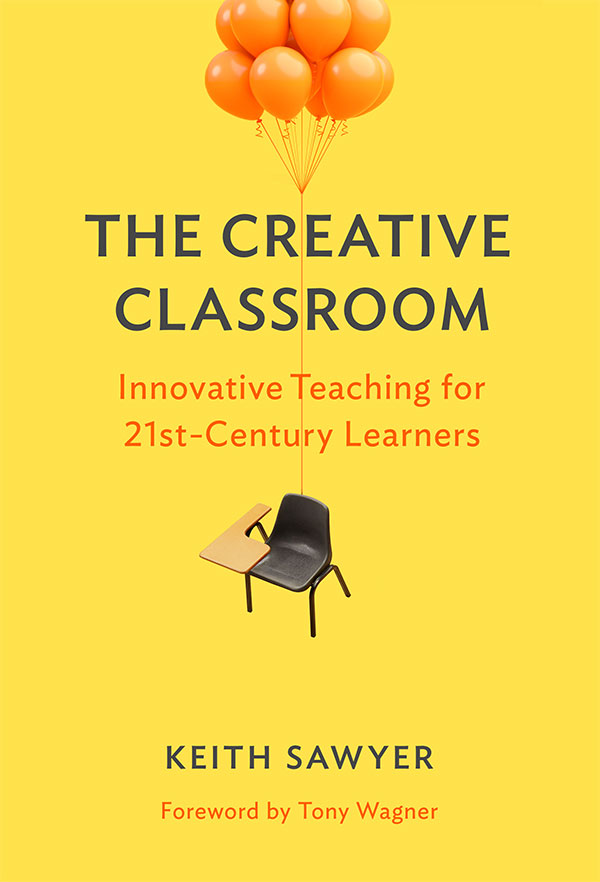
The Creative Classroom: Innovative Teaching for 21st-Century Learners
Additional Info:
The Creative Classroom presents an original, compelling vision of schools where teaching and learning are centered on creativity. Drawing on the latest research as well as his studies of jazz and improvised theater, Sawyer describes curricula and classroom practices that will help educators get started with a new style of teaching, guided improvisation, where students are given freedom to explore within structures provided by the teacher. Readers will learn how ...
The Creative Classroom presents an original, compelling vision of schools where teaching and learning are centered on creativity. Drawing on the latest research as well as his studies of jazz and improvised theater, Sawyer describes curricula and classroom practices that will help educators get started with a new style of teaching, guided improvisation, where students are given freedom to explore within structures provided by the teacher. Readers will learn how ...
Additional Info:
The Creative Classroom presents an original, compelling vision of schools where teaching and learning are centered on creativity. Drawing on the latest research as well as his studies of jazz and improvised theater, Sawyer describes curricula and classroom practices that will help educators get started with a new style of teaching, guided improvisation, where students are given freedom to explore within structures provided by the teacher. Readers will learn how to improve learning outcomes in all subjects—from science and math to history and language arts—by helping students master content-area standards at the same time as they increase their creative potential. This book shows how teachers and school leaders can work together to overcome all-too-common barriers to creative teaching—leadership, structure, and culture—and collaborate to transform schools into creative organizations. (From the Publisher)
Table Of Content:
Foreword (Tony Wagner)
Acknowledgments
Part 1. Introduction
Teaching with Guided Improvisation
Facing the Teaching Paradox
The Creative Teachers of the Future
Part 2. Teaching Creative Knowledge
Creative Knowledge and Shallow Knowledge
Moving Beyond the Coverage Trap
Learning Creativity and State Standards
Creative Habits of Mind
Creative Knowledge in Math, Science, and History
Teaching for Creativity in Every Subject
Part 3. Guided Improvisation
Learning to Improvise
Collaboration and Improvisation
Improv Techniques for Teachers
When Teachers Need to Break the Rules
Lesson Planning for Guided Improvisation
Balancing Structure and Improvisation
Summary
Part 4. Mastering the Teaching Paradox
The Structures of Guided Improvisation
Project-Based Learning and the Teaching Paradox
Managing the Teaching Paradox: Six Case Studies
From Novice Teacher to Expert Improviser
Improvising with Pedagogical Content Knowledge
Summary
Part 5. Schools for Creativity
The Culture of the Creative School
Leadership in the Creative School
The Organizational Structure of the Creative School
Assessment in the Creative School
Summary
Part 6. A Call to Action
References
Index
About the Author
The Creative Classroom presents an original, compelling vision of schools where teaching and learning are centered on creativity. Drawing on the latest research as well as his studies of jazz and improvised theater, Sawyer describes curricula and classroom practices that will help educators get started with a new style of teaching, guided improvisation, where students are given freedom to explore within structures provided by the teacher. Readers will learn how to improve learning outcomes in all subjects—from science and math to history and language arts—by helping students master content-area standards at the same time as they increase their creative potential. This book shows how teachers and school leaders can work together to overcome all-too-common barriers to creative teaching—leadership, structure, and culture—and collaborate to transform schools into creative organizations. (From the Publisher)
Table Of Content:
Foreword (Tony Wagner)
Acknowledgments
Part 1. Introduction
Teaching with Guided Improvisation
Facing the Teaching Paradox
The Creative Teachers of the Future
Part 2. Teaching Creative Knowledge
Creative Knowledge and Shallow Knowledge
Moving Beyond the Coverage Trap
Learning Creativity and State Standards
Creative Habits of Mind
Creative Knowledge in Math, Science, and History
Teaching for Creativity in Every Subject
Part 3. Guided Improvisation
Learning to Improvise
Collaboration and Improvisation
Improv Techniques for Teachers
When Teachers Need to Break the Rules
Lesson Planning for Guided Improvisation
Balancing Structure and Improvisation
Summary
Part 4. Mastering the Teaching Paradox
The Structures of Guided Improvisation
Project-Based Learning and the Teaching Paradox
Managing the Teaching Paradox: Six Case Studies
From Novice Teacher to Expert Improviser
Improvising with Pedagogical Content Knowledge
Summary
Part 5. Schools for Creativity
The Culture of the Creative School
Leadership in the Creative School
The Organizational Structure of the Creative School
Assessment in the Creative School
Summary
Part 6. A Call to Action
References
Index
About the Author
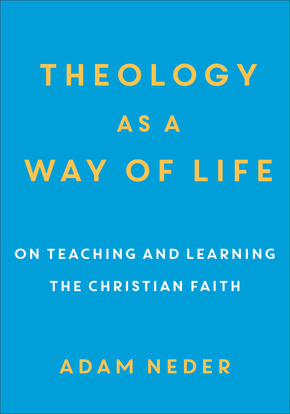
Theology as a Way of Life: On Teaching and Learning the Christian Faith
Additional Info:
What difference does Jesus Christ make for the way we teach the Christian faith? If he is truly God and truly human, if he reveals God to us and us to ourselves, how might that shape our approach to teaching Christian theology? Without a compelling theological vision of theological instruction and without a clear awareness of its unique goals, challenges, and temptations, our teaching will be out of joint with ...
What difference does Jesus Christ make for the way we teach the Christian faith? If he is truly God and truly human, if he reveals God to us and us to ourselves, how might that shape our approach to teaching Christian theology? Without a compelling theological vision of theological instruction and without a clear awareness of its unique goals, challenges, and temptations, our teaching will be out of joint with ...
Additional Info:
What difference does Jesus Christ make for the way we teach the Christian faith? If he is truly God and truly human, if he reveals God to us and us to ourselves, how might that shape our approach to teaching Christian theology? Without a compelling theological vision of theological instruction and without a clear awareness of its unique goals, challenges, and temptations, our teaching will be out of joint with the subject matter, and we will waste valuable opportunities.
Drawing on the work of Søren Kierkegaard, Karl Barth, and Dietrich Bonhoeffer, Adam Neder offers a clear and creative theological and spiritual reflection on the art of teaching the Christian faith. This concise and engaging book offers a wealth of fresh insights and practical suggestions. While addressed to teachers in academic contexts, the approach is broad enough to include anyone involved in teaching and learning Christianity. (From the Publisher)
Table Of Content:
Introduction
Ch 1. Identity
Ch 2. Knowledge
Ch 3. Ethos
Ch 4. Danger
Ch 5. Conversation
Bibliography
Index
What difference does Jesus Christ make for the way we teach the Christian faith? If he is truly God and truly human, if he reveals God to us and us to ourselves, how might that shape our approach to teaching Christian theology? Without a compelling theological vision of theological instruction and without a clear awareness of its unique goals, challenges, and temptations, our teaching will be out of joint with the subject matter, and we will waste valuable opportunities.
Drawing on the work of Søren Kierkegaard, Karl Barth, and Dietrich Bonhoeffer, Adam Neder offers a clear and creative theological and spiritual reflection on the art of teaching the Christian faith. This concise and engaging book offers a wealth of fresh insights and practical suggestions. While addressed to teachers in academic contexts, the approach is broad enough to include anyone involved in teaching and learning Christianity. (From the Publisher)
Table Of Content:
Introduction
Ch 1. Identity
Ch 2. Knowledge
Ch 3. Ethos
Ch 4. Danger
Ch 5. Conversation
Bibliography
Index